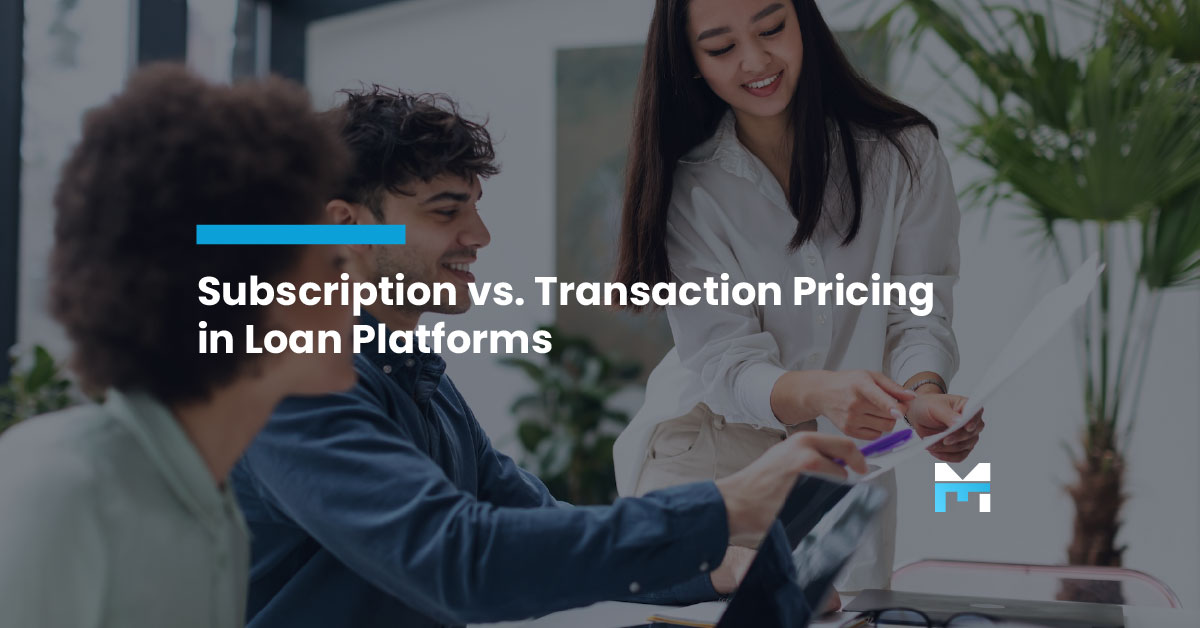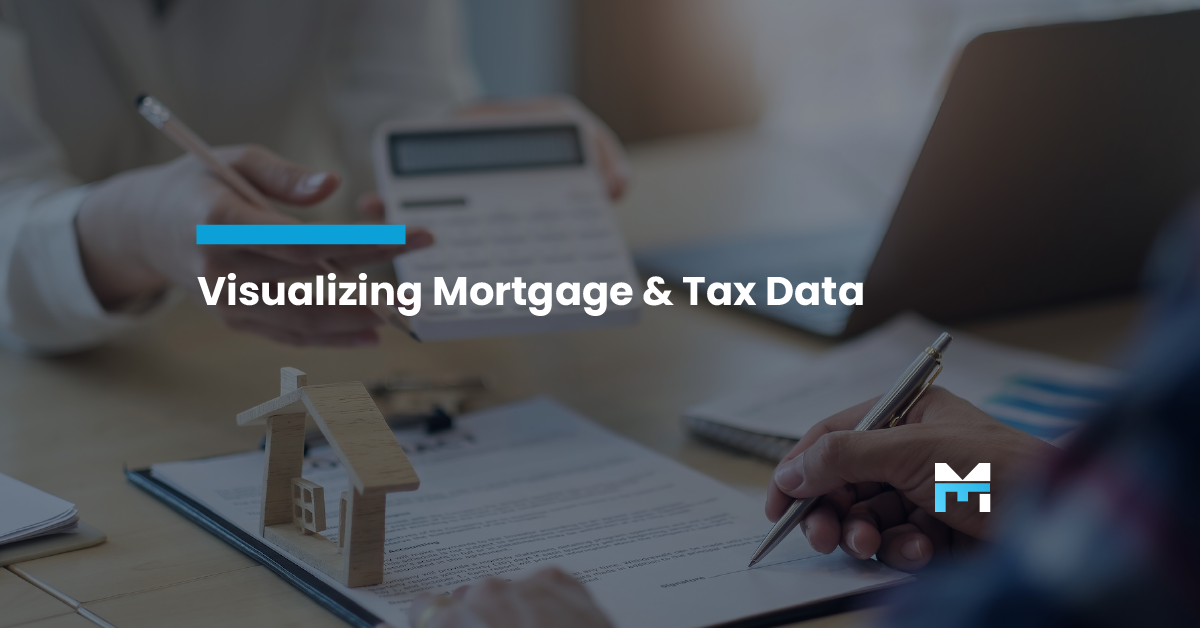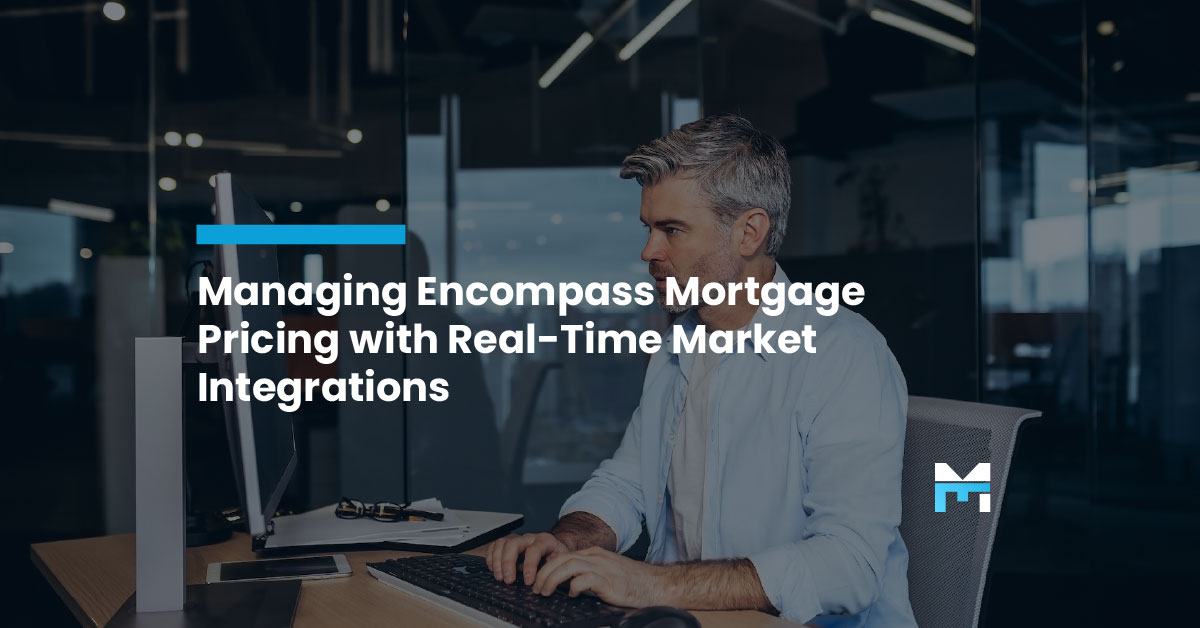5 min read
The Economics of Mortgage Loan Platforms: Subscription vs. Transaction Pricing
Justin Kirsch : Nov 13, 2025 1:00:00 PM

The mortgage industry stands at a crossroads. While traditional lenders cling to outdated pricing models, forward-thinking companies are discovering that the right platform pricing strategy can transform their entire operation. But here's the million-dollar question: Should your mortgage company embrace subscription pricing or stick with transaction-based models?
The answer isn't as straightforward as you might think, and getting it wrong could cost you significantly more than just money.
Table of Contents
- Understanding Basic Economic Principles of Mortgage Loan Platforms
- What is Subscription Pricing?
- What is Transaction Pricing?
- The Economics Breakdown: Subscription vs. Transaction Pricing
- The Sustainability Connection
- Making the Right Choice for Your Business
- Why Mortgage Workspace is Your Strategic Tech Partner
- Key Takeaways
- Frequently Asked Questions
Understanding Basic Economic Principles of Mortgage Loan Platforms
Before we dive into the pricing battle royale, let's establish some ground rules. Technology and mortgage platforms operate on fundamental economic principles that determine success or failure.
Think of your mortgage platform as the engine of your business. Just like you wouldn't put regular gasoline in a Formula 1 car, you can't expect basic pricing models to fuel high-performance lending operations. The platform loans mortgage industry has evolved beyond simple cost-per-transaction thinking.
Modern mortgage platforms must balance three critical economic factors: scalability, predictability, and profitability. The pricing model you choose directly impacts all three. Get this wrong, and you'll find yourself either bleeding money during slow periods or scrambling to handle increased volume when business picks up.
What is Subscription Pricing?
Subscription pricing operates like a monthly gym membership for your mortgage operations. You pay a fixed fee (usually monthly or annually)for access to platform services regardless of how many loans you process.
This model has gained tremendous traction across the fintech industry. According to recent data, subscription-based companies are growing 3.7 times faster than traditional businesses, with the subscription economy reaching $1.3 trillion in market spending.
Key characteristics of subscription pricing:
- Fixed monthly or annual costs
- Predictable budgeting
- Often includes updates and support
- Scales with business growth tiers
The beauty of subscription pricing lies in its predictability. Your CFO can forecast technology costs months in advance, making strategic planning significantly easier. Plus, you're never caught off guard by surprise transaction fees during busy seasons.
What is Transaction Pricing?
Transaction pricing works like paying tolls on a highway; you pay each time you use the service. Every loan application, every document processed, every verification completed triggers a fee.
This "pay-as-you-go" approach might seem more straightforward, but the economics can get complicated quickly. Mortgage processing can be complex, with multiple touchpoints throughout the loan lifecycle.
Key characteristics of transaction pricing:
- Variable costs based on volume
- Lower upfront investment
- Costs fluctuate with business cycles
- Can include multiple fee types per loan
Transaction pricing offers flexibility; when business is slow, your platform costs decrease accordingly. However, this same flexibility can become a liability when loan volume surges unexpectedly.
The Economics Breakdown: Subscription vs. Transaction Pricing
Now comes the interesting part. Which model actually saves money and drives better business outcomes?
Subscription Pricing Advantages
Predictable Cash Flow Management: With subscription pricing, your technology costs remain consistent whether you close 10 loans or 100 loans per month. This predictability allows for better financial planning and resource allocation.
Economies of Scale: As your loan volume grows, your per-loan technology cost decreases dramatically. Process 500 loans on a $5,000 monthly subscription, and your per-loan cost is just $10. Double your volume, and that cost drops to $5 per loan.
Enhanced Feature Access: Subscription models typically include regular updates, new features, and comprehensive support. You're not paying extra for each enhancement...they're built into your ongoing investment.
Transaction Pricing Advantages
Lower Barrier to Entry: New mortgage companies can start with minimal upfront technology investment. You only pay for what you use, making it easier to test market demand.
Volume Flexibility: During seasonal slowdowns or market fluctuations, your technology costs automatically adjust downward, providing natural cash flow protection.
Risk Distribution: Transaction pricing shifts some operational risk to the platform provider, as they only earn when you successfully process loans.
The Hidden Costs Nobody Talks About
Here's where things get sneaky. Transaction pricing often includes fees you didn't expect. Document verification fees, compliance check fees, integration fees, support fees; the list can grow longer than your loan application checklist.
Subscription pricing can have hidden costs too, particularly around user limits, storage capacity, or premium feature access. The key is understanding these costs upfront rather than discovering them on your monthly bill.
The Sustainability Connection
Speaking of long-term thinking, this pricing discussion ties directly into The Paperless Mortgage Office Sustainability Revolution.The pricing model you choose today impacts your ability to invest in sustainable, efficient operations tomorrow.
Subscription pricing often supports more comprehensive digital transformation initiatives. With predictable technology costs, you can better plan investments in automation, artificial intelligence, and workflow optimization...all crucial components of a sustainable, paperless mortgage operation.
Transaction-based models, while flexible, can make it harder to justify large-scale efficiency investments when costs fluctuate unpredictably. This creates a cycle where companies remain stuck with manual processes because they can't predict their technology budget accurately enough to invest in transformative solutions.
Making the Right Choice for Your Business
The "right" choice depends on your specific business model, growth trajectory, and risk tolerance. Here's how to evaluate your options:
Choose Subscription Pricing If:
- You process consistent monthly loan volumes
- You value predictable budgeting over cost flexibility
- You're planning significant growth or technology integration
- You want comprehensive platform features and support
- You can commit to longer-term contracts for better pricing
Choose Transaction Pricing If:
- Your loan volume fluctuates dramatically by season
- You're a startup testing market demand
- You prefer lower upfront technology investment
- You process relatively low loan volumes
- You want to minimize fixed costs during uncertain periods
Hybrid Approaches: The Best of Both Worlds?
Some progressive mortgage companies are discovering hybrid pricing models that combine elements of both approaches—base subscription fees for core platform access plus transaction fees for premium services or high-volume processing.
This approach provides budget predictability for essential operations while maintaining cost flexibility for variable business needs. It's like having a phone plan with unlimited basics but paying extra for international calls; you get what you need with options for what you want.
Why Mortgage Workspace is Your Strategic Tech Partner
Navigating platform pricing decisions requires more than spreadsheet calculations. It demands strategic expertise and proven industry knowledge. This is where partnering with Mortgage Workspace becomes essential to your success.
We've guided hundreds of mortgage companies through these exact pricing decisions, helping them avoid costly mistakes while optimizing their technology investments. Our team understands that pricing isn't just about monthly costs...it's about positioning your business for sustainable, profitable growth.
Our approach includes:
- Comprehensive cost-benefit analysis tailored to your specific business model
- Technology integration planning that aligns with your growth objectives
- Ongoing optimization support to ensure your pricing model continues serving your evolving needs
- Industry benchmarking to ensure you're making competitive decisions
Don't let pricing confusion derail your mortgage technology strategy. The companies winning in this market have expert partners helping them make informed decisions rather than gambling on gut feelings.
Ready to optimize your mortgage platform pricing strategy? Contact Mortgage Workspace today for a comprehensive analysis of your technology needs and pricing options. Your future profitability depends on getting this decision right, and we're here to ensure you do.
Key Takeaways
- Subscription pricing provides predictable costs and scales efficiently with growth
- Transaction pricing offers flexibility, but can become expensive at higher volumes
- Hidden costs exist in both models; due diligence is essential
- Your pricing choice impacts your ability to invest in sustainable, efficient operations
- Hybrid models can combine the advantages of both approaches
- Strategic partnerships help optimize pricing decisions and avoid costly mistakes
Frequently Asked Questions
- Can I switch from transaction to subscription pricing later?
Most platform providers allow pricing model changes, typically at contract renewal periods. However, switching may involve migration costs and adjustment periods. It's better to choose the right model initially rather than plan on switching later.
Calculate your average monthly loan volume and multiply by the per-transaction cost. Compare this to the monthly subscription fee. The break-even point is where these costs equal each other. Factor in hidden costs and growth projections for accurate analysis.
3. Do subscription models typically include customer support?Most subscription models include standard support, but premium support levels may cost extra. Transaction-based pricing often charges separately for support services. Clarify support inclusions before making pricing decisions, as support costs can significantly impact your total technology investment.

Visualizing Combined Tax and Mortgage Payment Trends for Clients
For most people, buying a home is the biggest financial decision they’ll ever make. It's a journey filled with excitement, but also a fair amount of...

1 min read
The Mortgage Tech Ecosystem Playbook: How To Build Systems That Scale, Automate, and Deliver
The mortgage industry stands at a crossroads. According to a 2023 McKinsey study, 85% of mortgage lenders have adopted some form of digital...

